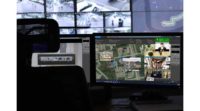Interface Systems, a managed service provider delivering business security, managed network, UCaaS, and business intelligence solutions to distributed enterprises, shared its predictions for technology trends that will impact quick serve restaurants (QSRs) in 2023.
“We are seeing labor shortages and commodity price increases as catalysts for restaurants to accelerate the adoption of an advanced array of new technology solutions spanning physical security and business intelligence,” said Brian Garavuso, CTO at Interface Systems.
The year cameras start to replace alarm systems.
2023 could be the year we start to see AI-based cameras replacing the traditional alarm panel. Why have a separate motion sensor and/or glass break sensor when you can have an AI-based camera that can accurately detect and characterize people or vehicles while providing video verification to a monitoring center? AI-based interactive video monitoring can also eliminate false alarms while providing better intrusion detection with fewer resources deployed on the ground.
The parking lot is the new dining room.
QSRs can’t seem to increase drive-thru capacity fast enough. What was a necessity during the pandemic, has only gained momentum as parking lots are increasingly being turned into massive transaction centers for restaurant chains. For 2023, drive-thru technology, supported by AI, will require more bandwidth to support outdoor apps and extend speed of service beyond a restaurant’s four walls. This will require increased investments in network infrastructure. Some businesses will utilize 5G, while many others will find that 4G LTE will fill the gap.
QSRs will invest in a better drive-thru experience.
QSRs will capitalize on the advancements in AI and data analytics to start generating more insights from security camera video streams to improve the drive-thru experience. With video analytics, restaurants looking to start drive-thru services or those looking to optimize their existing drive-thru services will have access to real-time data and intelligence. Metrics such as speed of service, number of cars served, throughput, and menu items frequently ordered can be easily correlated with marketing campaigns, weather, time of day, and staffing plans to eliminate bottlenecks and deliver faster service. Some video analytics solutions are now capable of recognizing the license plates of repeat customers thereby opening up opportunities to personalize the drive-thru experience.
Cloud-based physical security solutions will gain traction.
The rapid shift to cloud-based physical solutions is a boon for multi-location restaurant chains as the cloud provides a centralized system to control physical devices or sensors such as cameras, intrusion devices, and access control devices from any connected device or smartphone app. When restaurant managers are reassigned to a different location, they are no longer forced to unlearn everything they know about managing security because they are dealing with a completely new set of access codes and devices. Cloud-based security solutions also seamlessly integrate with popular identity management systems and this eliminates any security loophole while reducing IT team overhead in managing system access.
2023 will be the year when asset protection and IT teams will roll out broad-based technology solutions that will make other teams such as marketing, customer service, operations, and human resources critical stakeholders in digital transformation initiatives.






